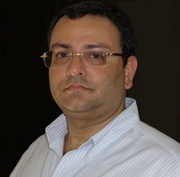Exiting a business is last resort for Tata Group, says Cyrus Mistry
03 Oct 2016
Tata Group does not look at ''short-term financial gains'' to decide whether to continue or exit a certain business and it evaluates all options before opting out of a business, chairman Cyrus Mistry has said, adding that he is "not embarrassed" to admit that the group has exited over 40 businesses in 20 years.
 But these, he said, were the last resort and after it were convinced that a turnaround is not possible.
But these, he said, were the last resort and after it were convinced that a turnaround is not possible.
Mistry cited the turnaround and growth of Tata's jewelery brand Tanishq and its IT arm Tata Consultancy Services as examples "within the group where persistence and a long-term perspective have paid off."
"And as we push the boundaries, there will always be failures, and we must expect these as part of our entrepreneurial model. Of course, critics could argue we could have been more aggressive with our exists and they most probably would be right if we were to take all our decisions through a short-term financial lens," Mistry said in New York last week.
Mistry was in New York to unveil the membership of FCLT Global, a body dedicated to encouraging "long-termism" in business and investment decision-making.
Besides Mistry, FCLT Global has other top global industry leaders, including Unilever CEO Paul Polman and McKinsey & Co global managing partner Dominic Barton as board members.
Mistry (48), who succeeded Ratan Tata in 2012 to head the global conglomerate, said for the group, long-term stakeholder value creation is also about identifying long-term trends and seeding businesses that can capitalise on some of these trends as they collide and create social and business paradigm changes.
"For Tata group sustainable profitable growth is the value creation philosophy and the fundamental lens through which we evaluate the performance of our group companies. In line with this philosophy, apart from the unique industry-specific strategic levers, there are a number of common directional themes that we urge our group companies to follow,'' he said.
''These would include generating unique insights and consistently improving our customer experience over time with the intent of strengthening our brand; creating organisational structures and mindsets that enable engagement and agility; developing intellectual property that results in a sustainable competitive advantage and constructing robust risk management processes at the strategic and operational level," he added.





















